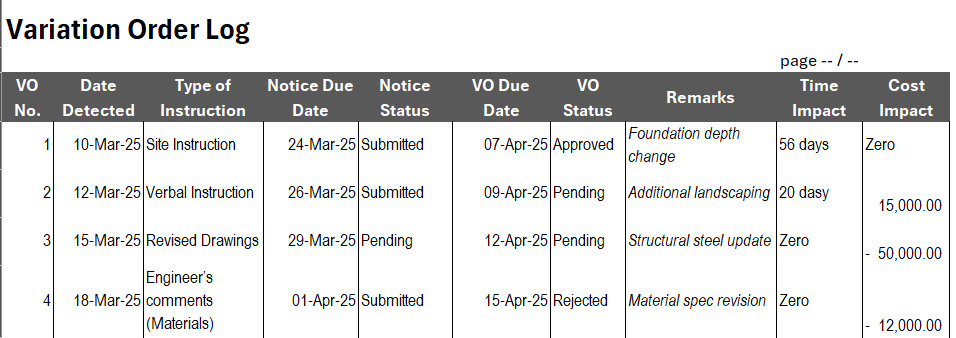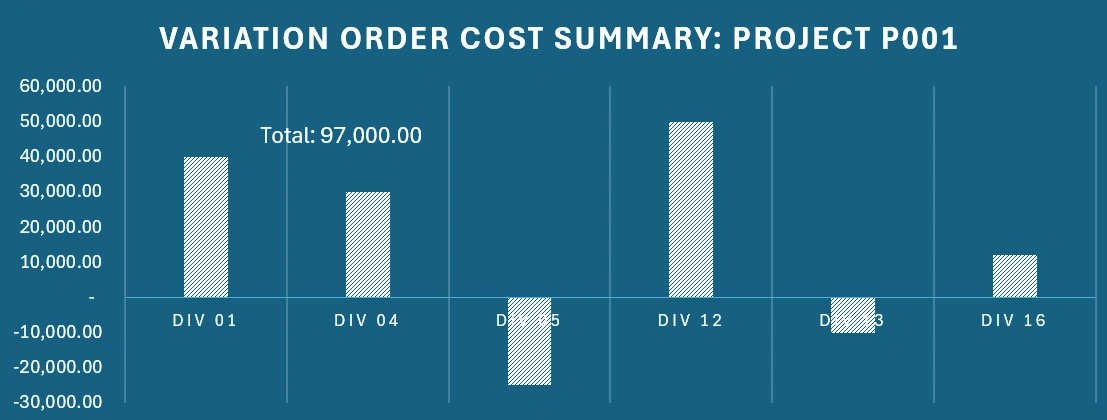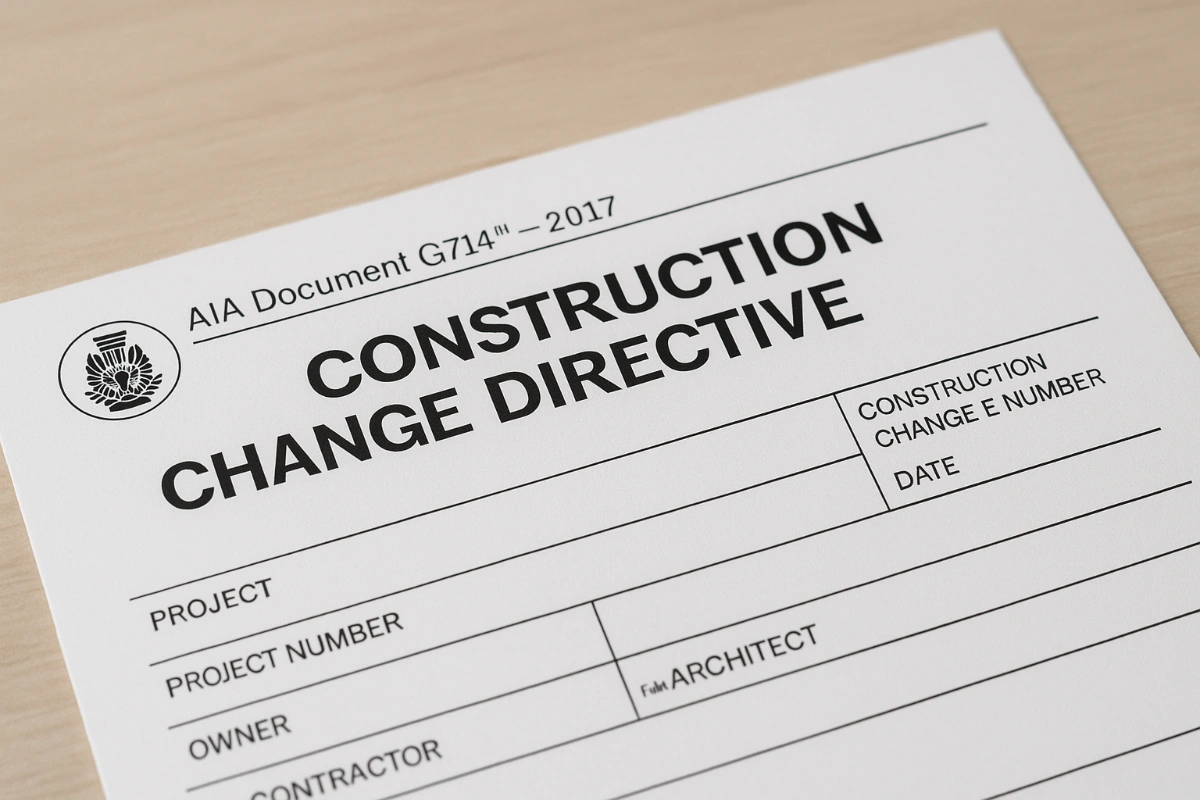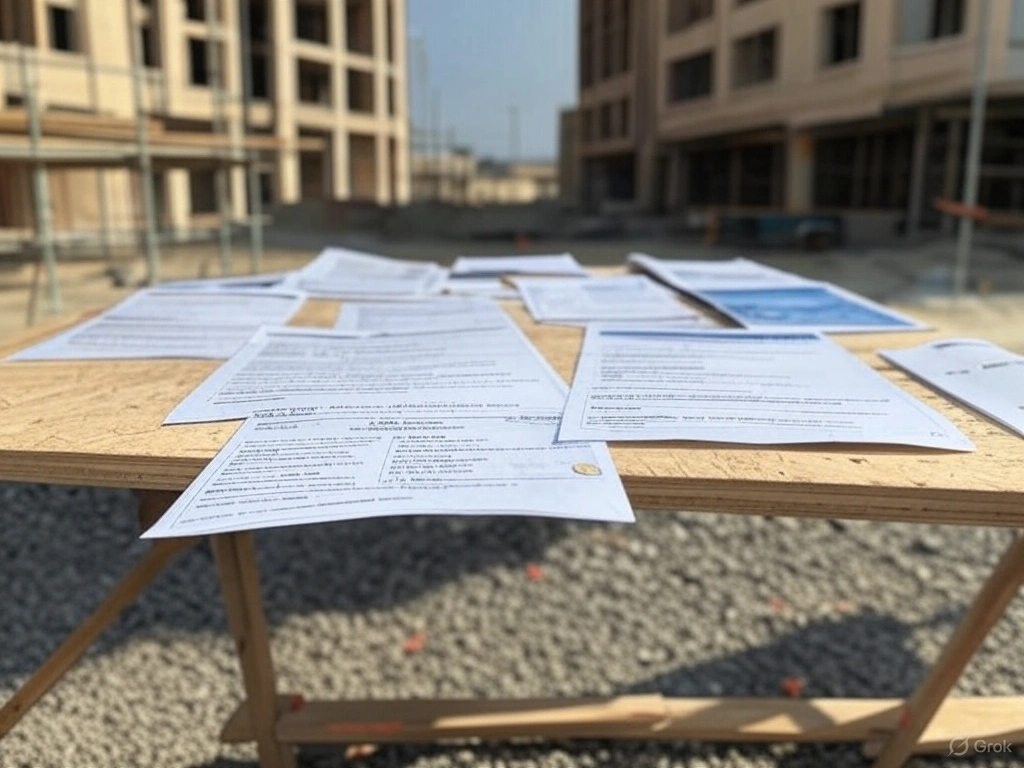Managing Variation Orders in Construction Projects: An Essential Guide
Almost every construction project, no matter how thoroughly planned, will encounter Variation Orders—reading this article could save your project from unnecessary losses and costly delays.
Introduction
Variation Orders (VOs), also known as Change Orders, play a crucial role in construction projects by allowing adjustments to the original scope of work agreed in contracts. These changes can be due to unforeseen circumstances, client requests, or compliance with new regulations, and are essential for the dynamic nature of construction environments.
What is a Variation Order?
A Variation Order is an official amendment to the construction contract, which alters the original specifications, quantities, or other conditions. It's a formal acknowledgment that the project plan has deviated from its initial path, whether by changing materials, design specifications, or project timelines. Managing VOs effectively ensures that projects meet their modified objectives without compromising on quality or budget.
Initiation of Variation Orders
VOs can be initiated by any primary party involved in a project—be it the contractor, the employer, or the engineer. Common triggers include unexpected site conditions, changes in project requirements, or legal amendments affecting the project scope. Each VO should be logged promptly, detailing the nature of the change and its expected impact on the project timeline and costs.
Types of Variation Orders
Variation orders can arise from several sources including but not limited to:
1. Site Instructions and Meeting Minutes:
Formal changes issued through official communications or recorded in meeting outcomes.
2. Verbal Instructions:
Informal changes that need to be confirmed in writing to ensure they are formally recognized and implemented.
3. Engineering and Regulatory Feedback:
Adjustments due to engineer's comments on drawings or compliance with new regulations that affect project specifications.
4. Contractor Proposals:
Suggestions by contractors to optimize or alter the scope, which can lead to cost savings or time efficiencies if approved.
5. Specification Changes:
Directed by the engineer or employer, these modifications adjust materials or project specifications.
6. Addition or Removal of Scope :
Also known as positive or negative variations, these adjustments directly affect the project scope.
7. Value Engineering:
Proposals initiated by any party aimed at improving project value through better performance, cost reduction, or enhanced efficiency.
Each type highlights the need for clear communication and documentation to avoid disputes and ensure that all changes are understood and agreed upon by all stakeholders.
Logging the Variation Orders
It is crucial to systematically record each VO to track its impact on project quality, finances, and deadlines. This log should include details about the detection date, the nature of the variation, and deadlines for official notices and VO issuance, ensuring compliance with contractual timelines.

- Download Variation Order Log pdf template ( variation order log sample )
- Download Variation Order excel customizable template ( variation order log sample )

Sending Notices to Variation Orders
The process of sending notices is a contractual obligation that informs the employer about potential VOs. These notices should be issued within the time frames specified in the contract and should detail the event causing the variation, its anticipated impact, and preliminary assessments of additional time or costs involved.
Sample Notice:
- Download Variation Order Notice pdf template ( variation order notice sample )
- Download Variation Order Notice word customizable template (variation order notice sample)
Issuing the Variation Order
When issuing VO, the document should include:
- A comprehensive description of the change.
- Updated plans or specifications.
- Adjustments to the contract price and timeline.
- Justifications for the changes, ensuring all parties are on the same page.
Sample Official Variation Order:
- Download Variation Order pdf template (variation order sample)
- Download Variation Order word customizable template (variation order sample)
Pricing the Variation Order
When pricing Variation Orders (VOs) in construction contracts, the changes are typically priced according to the unit rates specified in the contract's Bill of Quantities or previously approved rates. This standard approach ensures consistency and fairness in pricing adjustments necessary due to the VO. However, the contract may stipulate conditions under which these rates can be revisited and potentially altered. For instance, if the total cost of varied works exceeds a certain percentage of the original contract value, the contractor has the right to negotiate new rates.
Estimating the time impact caused by the Variation Order – Schedule Impact Analysis:
To effectively assess the time impact of a Variation Order(VO) in construction projects, it is essential to conduct a Schedule Impact Analysis. This process starts with the project's baseline schedule, which details all planned activities along with their durations. When a VO is introduced, project managers must pinpoint the specific activities that are affected by the change, determining whether these activities are either prolonged or shortened.
The next step involves incorporating these adjustments into the project scheduling software. The modified schedule is then analyzed to determine its effect on the project’s critical path—the sequence of dependent tasks that dictate the minimum time required to complete the project. If the analysis shows that the end date is pushed out, it indicates that the VO has a delaying impact on the critical path. Conversely, if the end date moves earlier or remains unchanged, it suggests that the VO may either shorten the project duration or have no impact on the critical timeline, respectively.
This method of Schedule Impact Analysis not only quantifies the delay or time savings introduced by VOs but also aids in transparent and strategic project management, allowing stakeholders to make informed decisions regarding schedule adjustments and resource allocation.
Contractors’ Rights
Contractors must be aware of their rights under the contract, especially if responses to VOs are delayed by the employer or engineer, which could lead to disputes. According to FIDIC guidelines, contractors have the right to claim extensions or cost adjustments if the employer or engineer fails to respond timely or adequately to submitted VOs.
In addition, the change in scope may give the contractor the right to object to variation orders.
Construction Submittal Form
When submitting a Variation Order (VO) for the engineer's review, it's often mandatory to include it within an official construction submittal form. This standardized document ensures that all necessary information is presented consistently, facilitating a thorough and efficient evaluation process. To assist in this procedure, free, customizable submittal form templates are available in Word, Excel, and PDF formats. These templates allow for easy customization to align with specific project requirements, streamlining documentation and approval workflows. For a comprehensive guide on effectively completing a construction submittal form and to access these free templates, refer to the "Construction Submittal Form Guide: Free Downloadable Templates in Excel, Word, and PDF."
Related Readings:
The Crucial Role of Timely Notices in Construction Projects: An Engineer's Guide
Conclusion
Effective management of Variation Orders is pivotal for the successful completion of construction projects. By understanding and implementing structured processes for initiating, logging, and issuing VOs, project teams can ensure adaptability to changing conditions without losing sight of the project's goals and budgets.
Call to Action
Construction professionals should strive to adopt best practices in VO management, utilizing tools and resources to ensure every change is documented and managed efficiently. For more detailed guidance, consider downloading our comprehensive VO management templates available on this page.












